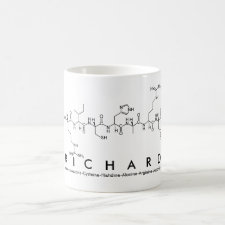
Authors: Nguyen TH, Ansell RJ
Article Title: N-isopropylacrylamide as a functional monomer for noncovalent molecular imprinting.
Publication date: 2011
Journal: Journal of Molecular Recognition
Volume: 25
Issue: (1)
Page numbers: 1-10.
DOI: 10.1002/jmr.1163
Abstract: Although N-isopropylacrylamide (NIPAM) has previously been used in molecular imprinting, it has mostly been considered as an "inert" monomer, or included for its temperature-responsive nature, rather than as a functional monomer responsible for the interactions with the template at the recognition site. A comparative study of NIPAM and other traditional, functional monomers for the imprinting of a hydrogen bond donor template, bisphenol A (BPA), is reported. Nuclear magnetic resonance titration data suggest that NIPAM forms a stronger complex with BPA than either acrylamide or methacrylic acid but a weaker complex than vinylpyridine. Molecular imprinted polymers (MIPs) were prepared using each functional monomer and compared as stationary phases for the separation of BPA from structural analogues. The NIPAM-containing MIP bound BPA with better selectivity than those prepared using acrylamide or methacrylic acid. Using NIPAM also reduces the nonspecific binding, which is found with MIPs using vinylpyridine as functional monomer. Copyright © 2011 John Wiley & Sons, Ltd
Template and target information: bisphenol A, BPA
Author keywords: bisphenol A, HPLC stationary phase, molecular imprinting, N-isopropylacrylamide, NMR titration, Noncovalent imprinting



Join the Society for Molecular Imprinting

New items RSS feed
Sign-up for e-mail updates:
Choose between receiving an occasional newsletter or more frequent e-mail alerts.
Click here to go to the sign-up page.
Is your name elemental or peptidic? Enter your name and find out by clicking either of the buttons below!
Other products you may like:
 MIPdatabase
MIPdatabase









